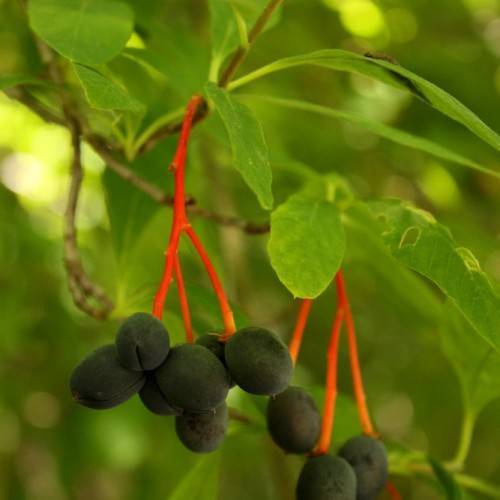
Indian plum
Oemleria cerasiformis
Also Known As - Indian plumCycle:
Perennial
Watering:
Average
Hardiness Zone:
6 - 10
Flowers:
Flowers
Sun:
Full sun,part shade
Soil:
Loamy Humus
Fruits:
Fruits In Summer Ready In Fall
Edible:
Yes
Leaf:
Yes
Growth Rate:
High
Maintenance:
Low
Salt Tolerant:
Yes
Thorny:
Yes
Care Level:
Medium
watering
Indian plum should be watered every 7 to 10 days when the soil feels dry to the touch. In drier regions, water should be increased accordingly. During flowering, increase watering frequency to every few days if there is insufficient rainfall. Providing a layer of mulch will help conserve moisture. The soil should be well-draining, as Indian plum does not tolerate soils that remain wet for long periods of time. When watering, make sure to provide enough water to thoroughly moisten the root zone.
sunlight
Indian plum (Oemleria cerasiformis) prefers full sun locations in order to reach its full potential, with best growth in 8-12 hours of direct sunlight each day. This species does well in partial shade, but may not develop as many flowers or produce as much fruit without consistent sunshine. To maximize winter hardiness, Indian plum should be provided with afternoon shade.
pruning
Indian plum (Oemleria cerasiformis) should be pruned in late winter, while the tree is still dormant, before new growth begins in mid-spring. Pruning should be done to reduce its size if it is outgrowing its space, shape the tree into an attractive form, remove dead or damaged branches, and open up the canopy to allow for abundant light and air circulation. When pruning Indian plum trees, be sure to use pruning shears to cut the branches off at an angle, flush to the trunk. Cuts should be made 1/4 inch above an outward-facing bud. Make sure to avoid leaving stubs and don’t shorten the branch back to a lateral branch. Lastly, remove any suckers that appear.
